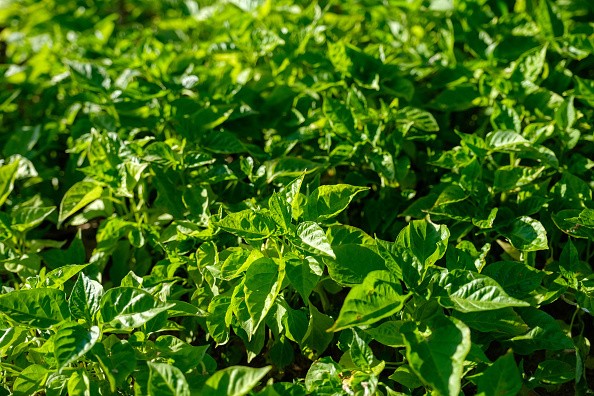NASA astronauts have successfully grown the first chili peppers in space, and they got to try it recently in a taco taste test.

The chili peppers were a product of an experiment called Plant Habitat-04, whose main goal is to fully cultivate chili peppers on the International Space Station, according to NASA.
These chili peppers grown on the ISS were of a hybrid variety that NASA calls the NuMex 'Española Improved' Pepper. They've been growing aboard the station since July 12, in an area known as the Advanced Plant Habitat or APH.
Astronaut Megan McArthur tweeted about the peppers and the time they put the spices into their space tacos:
Friday Feasting! After the harvest, we got to taste red and green chile. Then we filled out surveys (got to have the data! 😁). Finally, I made my best space tacos yet: fajita beef, rehydrated tomatoes & artichokes, and HATCH CHILE! https://t.co/pzvS5A6z5u pic.twitter.com/fJ8yLZuhZS
— Megan McArthur (@Astro_Megan) October 29, 2021
As per McArthur's tweet, it looked like the astronauts enjoyed their "best" tacos yet aboard the ISS. But that's not the end of the cultivation journey for the peppers.
Some of the chilis are scheduled to go back to Earth for analysis, reports CNN. The others that will be left behind will continue growing on the APH as a way of providing a more well-rounded diet for the astronauts.
Before the peppers were brought to the ISS to be eaten by astronauts, they were found growing in the Hatch Valley in Mexico, reports NPR.org. They were brought onboard as part of research into so-called "plant-microbe interactions" in space.
Why Grow Peppers In Space?
The agency picked peppers because they determined that the spices are an excellent source of Vitamin C for the astronauts aboard the station.
Aside from that, the peppers also proved to be the best performers during several ground tests performed in the APH.

But why grow peppers and other plant crops in outer space, you ask? The answer is because NASA wants to see if they can reduce the stress brought on by microgravity on plants--things which have evolved to grow on Earth's gravity for billions of years.
When they do find out how to make it easier for plants to grow in space, they can then move on to planning longer-term missions because there will be enough food supply to last the astronauts.
These chili peppers, however, have proven to be the toughest of the bunch to grow. NASA has managed to cultivate radishes, mustard, cabbages, and even Pak Choi aboard the ISS relatively easily.
The challenge with cultivating the peppers was mostly due to how much time they needed to grow. They also required pollination, unlike other leafy space crops. As a result, the astronauts needed to keep a close eye on the peppers almost every single hour, using the array of sensors present in the APH.
Plant Habitat-04 is among NASA's first steps to enable humanity to further expand into the cosmos--all without having to send multi-billion-dollar robots but human crews. And so far, things seem to be going well.
This article is owned by Tech Times
Written by RJ Pierce
![Apple Watch Series 10 [GPS 42mm]](https://d.techtimes.com/en/full/453899/apple-watch-series-10-gps-42mm.jpg?w=184&h=103&f=9fb3c2ea2db928c663d1d2eadbcb3e52)



